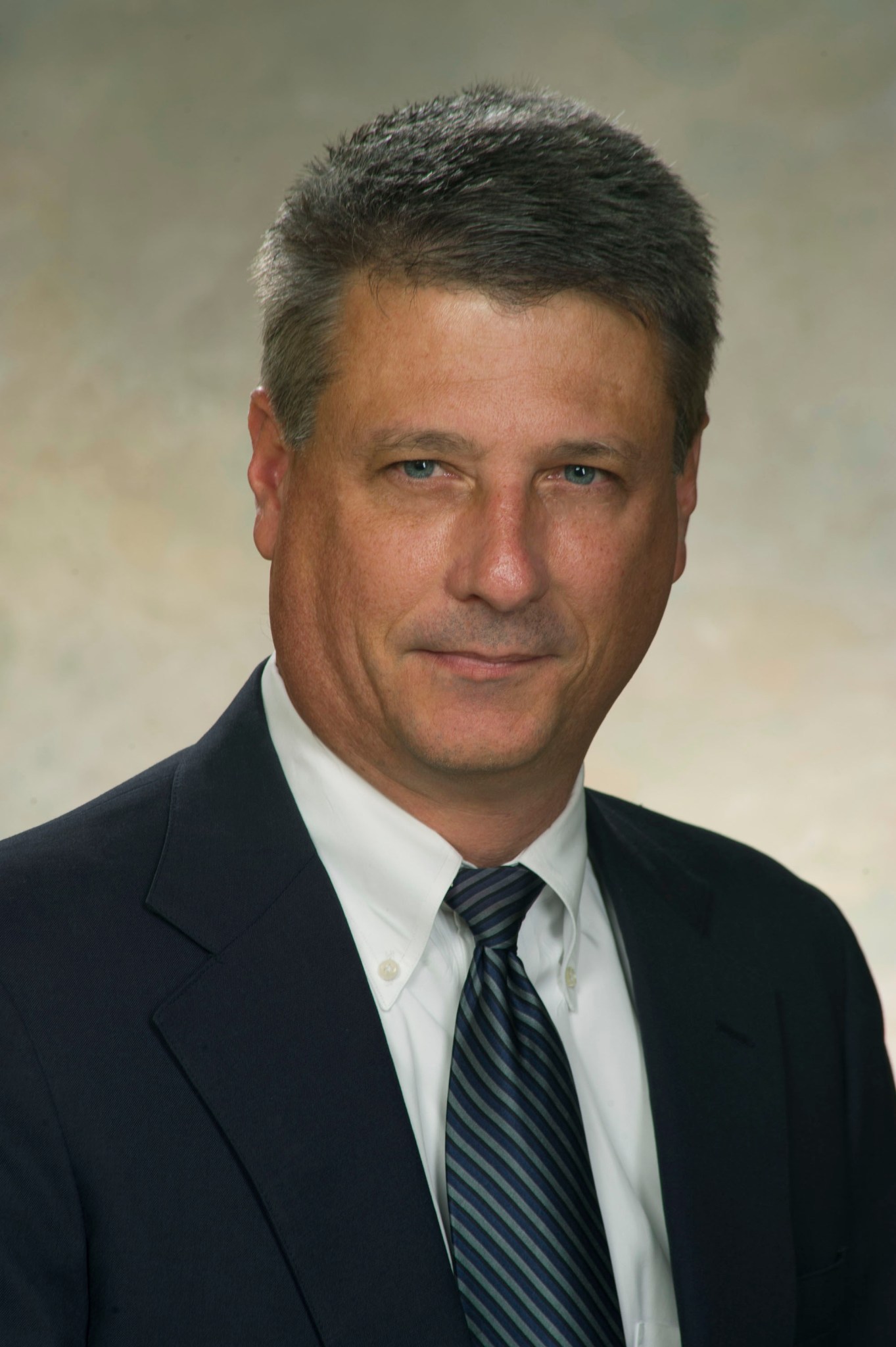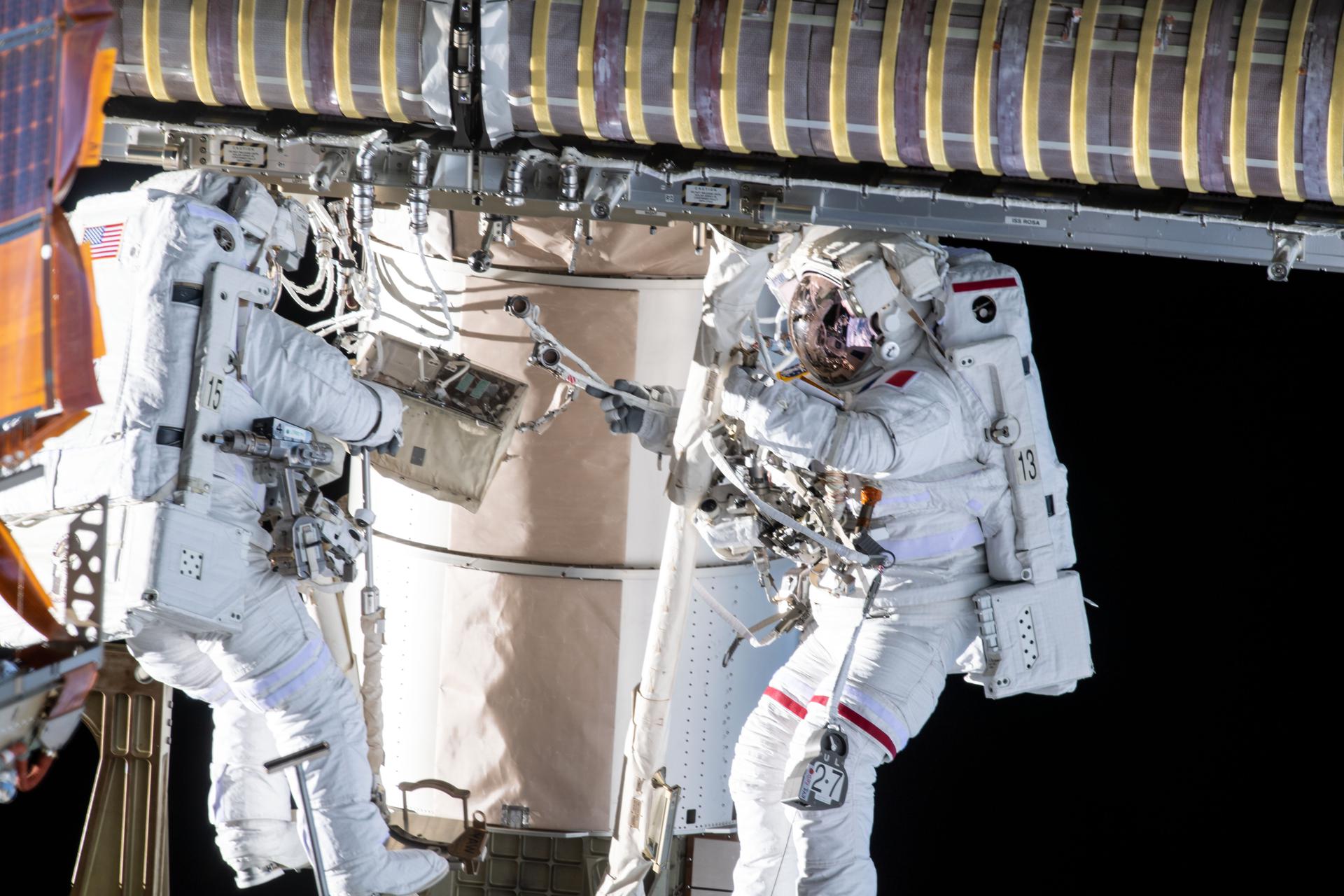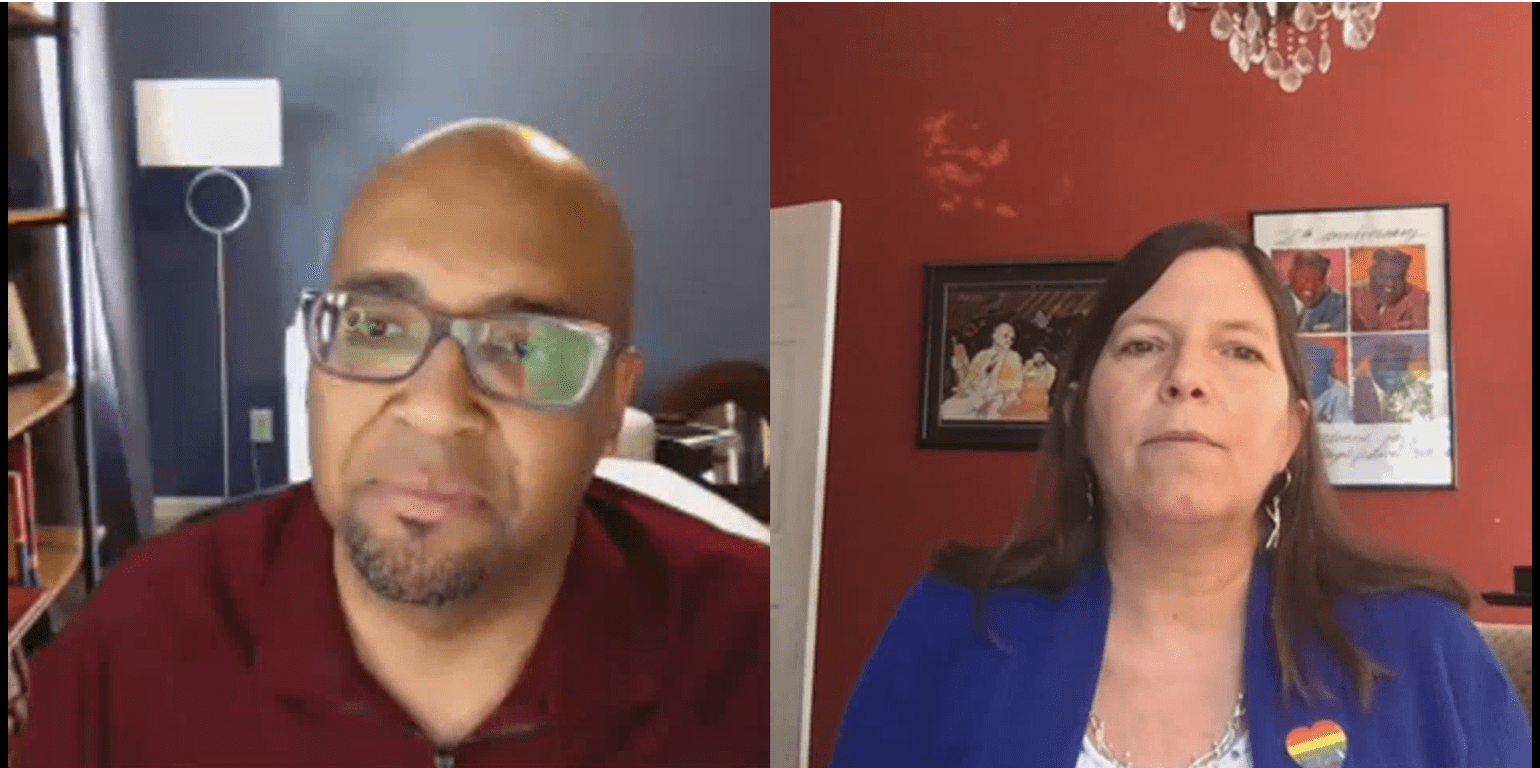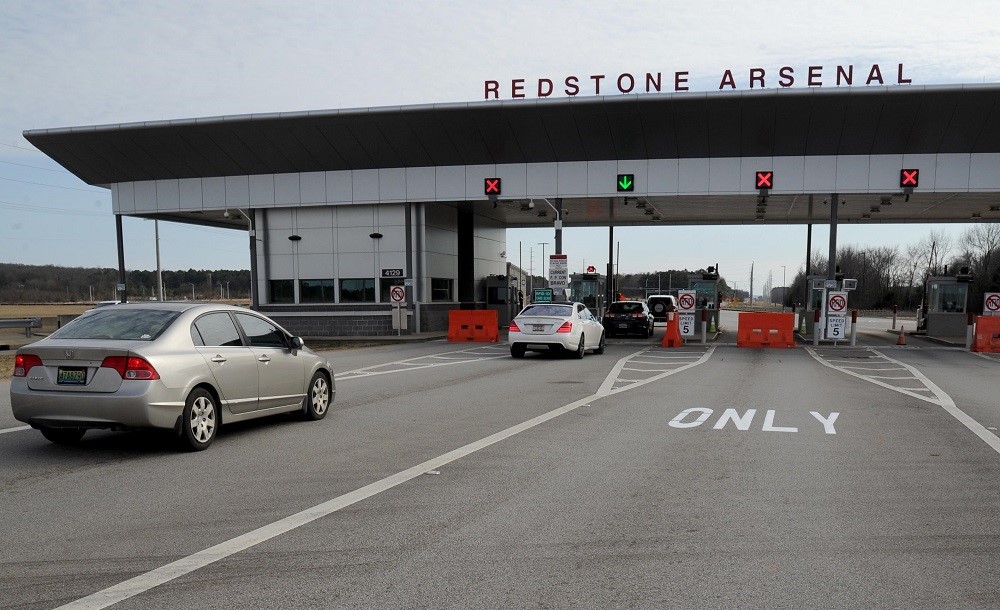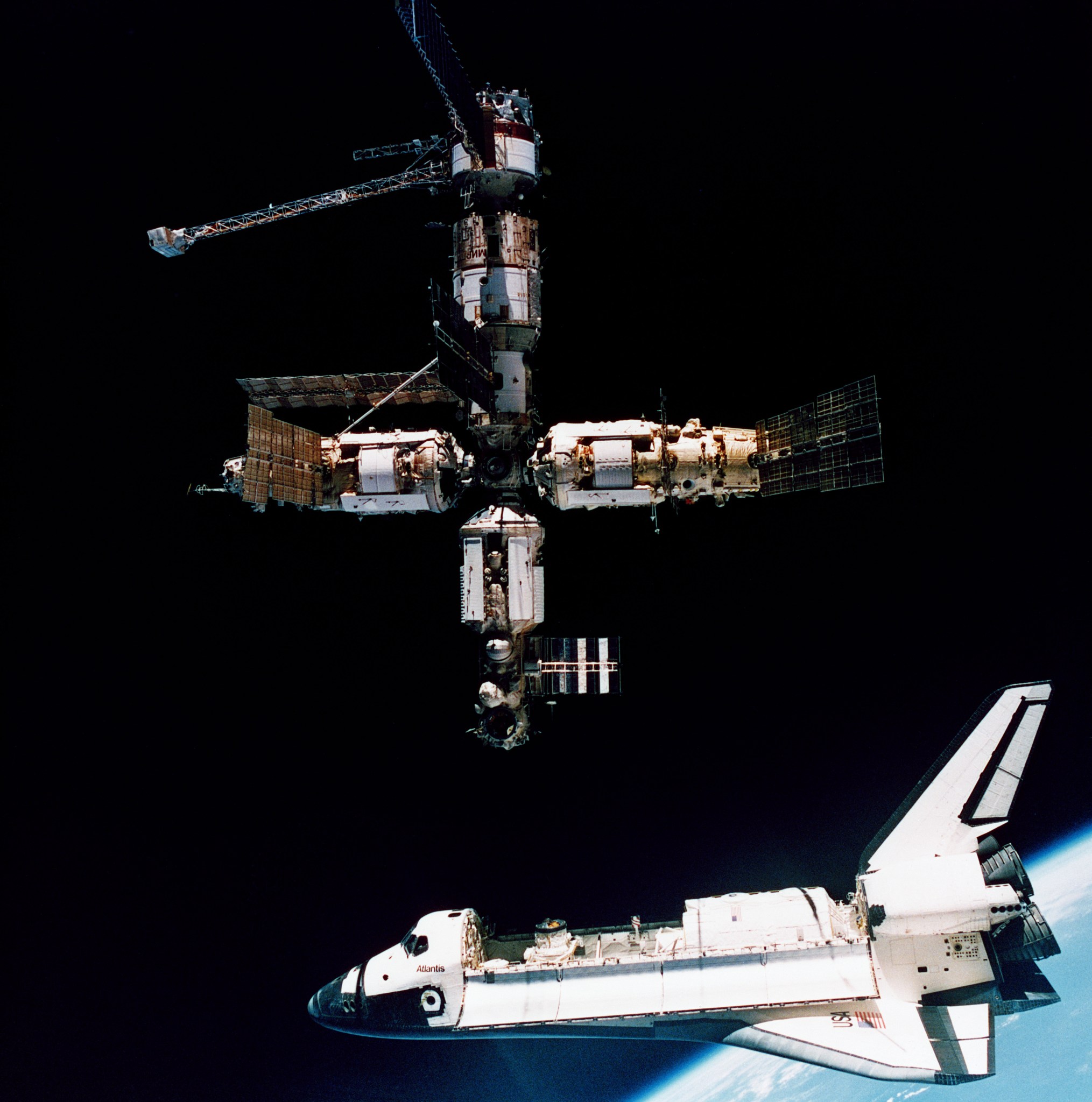Take 5 with Chris Cianciola
By Tracy McMahan
When Chris Cianciola thinks about the Space Launch System rocket, it is not metal or steel or the roar of engines that most concerns him, it is the astronauts that will ride the rocket to space. As a child, his parents took him to see a Saturn V launch in 1969 that sent Apollo 11 astronauts to land on the Moon for the first time. That was the beginning of his fascination with space that led him to a long career evaluating how to build and operate space vehicles, so they safely send crews to space and return them to Earth.
Cianciola is the deputy manager for the SLS Program at NASA’s Marshall Space Flight Center. He shares responsibility for all facets of the program, including programmatic and technical planning, procurement, development, testing, evaluation, production, and operations. A 20-year NASA veteran, Cianciola’s previous roles at Marshall include SLS chief safety officer, International Space Station Program manager for Payload Operations, and key positions in the space shuttle’s Reusable Solid Rocket Booster and External Tank projects.
Now he leads the team focused on every aspect of building the world’s most powerful rocket that will send astronauts on missions to the Moon.
“Both on the space station and space shuttle, I have seen what astronauts can achieve while working in space, and how the NASA team on Earth helps them be successful in space,” he said. “I am honored to lead a team building a rocket that will send humans to the Moon on the Artemis missions.”
Question: How do you encourage teamwork, collaboration, and integration, especially in this unprecedented telework environment?
Cianciola: It was important to let our people know that keeping them safe was our top priority. We’ve had regular all-hands meetings with the entire SLS team. For some of these, we invited experts from the community to discuss what they knew about the pandemic and best practices for staying safe and keeping families safe. Despite the pandemic and six hurricanes and tropical storms that hit SLS test facilities in Mississippi, the SLS team accomplished two major test campaigns over the course of the last year – our structural testing at Marshall and the core stage Green Run test at Stennis. This required immense collaboration by our team including teammates at other NASA centers and industry partners across America. To accomplish work needed to launch the Artemis I mission to the Moon, we developed plans to conduct the most critical work safely on-site at NASA facilities. These had to be approved by the center and NASA Headquarters. To stay on track and address any issues, we added several weekly virtual meetings with the SLS element managers and prime contractors. This provided regular forums to communicate often and address issues quickly.
Question: How are you managing your personal and your team’s work-life balance, especially now, more than a year into the COVID-19 pandemic?
Cianciola: I have been amazed at what we have accomplished in this environment. I can’t believe that even while working from home, this team gets all the critical work done on time. Now that we’ve completed our major test campaigns and delivered the core stage to Kennedy Space Center, we are encouraging people to make time to take vacations and spend times with their families. This year as we move toward the Artemis I launch, the workload is going to continue to be demanding, so it is important for people to take some time for themselves and recharge.
Question: How does your team honor and demonstrate NASA’s commitment to creating a diverse and inclusive environment where team members are valued for their unique contributions?
Cianciola: Building a 21st-century rocket requires a 21st-century team that is diverse. One aspect that I have particularly enjoyed is being able to mentor young rocket engineers from diverse backgrounds. Some of our managers started their careers during the Space Shuttle Program and at the beginning of the International Space Station Program. A few of our managers were even mentored by Saturn engineers at the end of their careers. The SLS Program has given us the opportunity to train a whole new generation of engineers. We’ve created a work environment where we want these engineers to speak up if they have novel ideas that can improve our processes and program. Some young engineers on our team have followed the SLS core stage from Michoud Assembly Facility where it was built to Stennis where it was Green Run tested to Kennedy where it was recently stacked for Artemis I. As we build SLS rockets, we are training the Artemis Generation that will lead the next era of deep space exploration.
Question: What key partnerships are your team pursuing to help NASA build and develop a sustainable presence on the Moon? Help push the boundaries of science, technology, and/or human exploration?
Cianciola: To explore space in a sustainable way, you need a super heavy-lift rocket like SLS. No other rocket has the performance to send the Orion spacecraft, astronauts, and supplies to the Moon on a single mission. SLS is the backbone of the Artemis missions, and our team is moving from a development phase to a production phase for the rocket. The team is currently building rockets for use beyond Artemis V. Both NASA and our prime contractors learned many lessons while building the first heavy-lift launch vehicle since the development of the Saturn V rocket in the 1960s. The 212-foot core stage was the newest part of the rocket, and we are using lessons learned from building the first one to build core stages about 40% faster. We now have core stages under production for Artemis II, III, and IV. We had 16 RS-25 engines from the shuttle that we upgraded for SLS. Now, we are working with our prime contractor to produce those engines with modern manufacturing techniques that will lower the cost by up to 50%. And as we look to the future, we have already started building the Exploration Upper Stage that will allow SLS to send 40% more payload to the Moon than our initial SLS configuration. SLS provides the capabilities for us to transport both people and payload to the Moon and beyond, allowing America to push the boundaries of science, technology, and deep space exploration.
Question: Why do you think your team is successful at staying mission-focused?
Cianciola: The Artemis missions to the Moon are a historic endeavor like none attempted since the Apollo Program. The last time humans walked on the Moon was 1972. Our team stays focused by realizing the historic importance of what we are doing for America. When I talk to people across the team, they understand and are excited about building the world’s most powerful rocket and the capability it provides for NASA to do missions on the Moon and in deep space. When you have a goal that grand, it is easy to stay focused on the mission.
McMahan is a public affairs officer in Marshall’s Office of Strategic Analysis & Communications.
Recent Take 5s
Joseph Pelfrey, manager of Marshall’s Human Exploration Development & Operations Office
Bill Hill, director of Marshall’s Safety and Mission Assurance Directorate.
Rahul Ramachandran, manager of NASA’s Inter-Agency Implementation and Advanced Concepts Team at Marshall.
Susan Whitfield, Marshall’s director of human resources
Spacewalkers Complete Second Roll-Out Solar Array Installation
NASA astronaut Shane Kimbrough and European Space Agency astronaut Thomas Pesquet concluded their June 25 spacewalk after 6 hours and 45 minutes. In the ninth spacewalk of the year outside the International Space Station, the two astronauts installed and deployed a new ISS Roll-Out Solar Array on the far end of the port side of the station’s P6 backbone truss structure.
Kimbrough and Pesquet successfully removed the array from its position in the flight support equipment, maneuvered it into position, connected the electrical cables, and released it to extend the solar array to its fully deployed position at the 4B power channel. After deployment, Pesquet also retrieved an articulating portable foot restraint to bring inside the space station.
During two spacewalks June 16 and 20, Kimbrough and Pesquet installed and deployed a new array on the 2B power channel – also on the port 6 truss. Both new solar arrays are providing good power generation. Each new array is expected to produce more than 20 kilowatts of electricity.
NASA is augmenting six of the eight existing power channels of the space station with new solar arrays to ensure a sufficient power supply is maintained for NASA’s exploration technology demonstrations for Artemis missions and beyond as well as utilization and commercialization.
This was the ninth spacewalk for Kimbrough, the fifth for Pesquet, and the fifth they conducted together. Kimbrough has now spent a total of 59 hours and 28 minutes spacewalking, and Pesquet’s total spacewalking time is 33 hours.
Space station crew members have conducted 241 spacewalks in support of assembly and maintenance of the orbiting laboratory. Spacewalkers have now spent a total of 63 days, 7 hours, and 41 minutes working outside the station.
In November 2020, the space station surpassed its 20-year milestone of continuous human presence, providing opportunities for unique research and technological demonstrations that help prepare for long-duration missions to the Moon and Mars and also improve life on Earth. In that time, 244 people from 19 countries have visited the orbiting laboratory that has hosted nearly 3,000 research investigations from researchers in 108 countries and areas. The Payload Operations Integration Center at NASA’s Marshall Space Flight Center oversees all experiments and science communications aboard the space station.
‘Silence is Very Loud’: For Pride Month, Marshall, NASA Embrace Active Allyship
By Rick Smith
It’s never pleasant to feel alone in a crowd. Something as simple as an encouraging word from a colleague or a quiet show of community and solidarity, may be all it takes to turn that feeling around and help others achieve all they’re capable of achieving.
At NASA, the sky is no limit on the heights such allyship can attain.
That theme – “The Power of Active Allyship” – was a common thread in NASA’s 2021 Pride Month events, recognizing and celebrating lesbian, gay, bisexual, transgender, and queer members of its diverse team around the country.
What is active allyship? For NASA Administrator Sen. Bill Nelson, who introduced the agency’s June 17 online panel discussion event, it means “working together to fight injustice and promote equity in the workplace, where members of this community and our allies will discuss the issues we face as a united NASA family.”
The panel discussion, which drew viewers from all over the world, centered on understanding the barriers faced by the LGBTQ+ community – and how straight and cisgender team members can help shatter those barriers as active allies, upholding NASA’s long tradition of championing diversity, inclusion, and equity.
Participants included NASA Deputy Associate Administrator Melanie Saunders; Donna Shafer, associate director at NASA’s Johnson Space Center; Sarah Jane Phillips, a visual information specialist at NASA’s Glenn Research Center; and Ron Brade, retired associate director at NASA’s Ames Research Center. Charles Cockrell, associate director for strategy at Glenn, moderated.
“Silence is very loud,” said Phillips, who encouraged team members to take any opportunity to let others know they care, suggesting that silence can be just as damaging as open hostility. “You don’t have to fly a rainbow flag on your house. You don’t have to shout ‘I’m an ally!’ Just speak. Discuss these things.”
Saunders also emphasized the value of providing diversity training for supervisors across the agency. During her years at Johnson, all team members took a basic “Introduction to Unconscious Bias” class, she said, and supervisors delved deeper still, participating in advanced courses probing issues of race, power, and privilege.
In any team role, visible allyship isn’t difficult, Cockrell said. NASA personnel can wear rainbow flag pins, or put their self-identifying pronouns in their email signature line, demonstrating solidarity and declaring themselves to be active allies.
“The most important thing is just being there, and letting [others] know you’re there,” Phillips added. “NASA really does care when we say ‘For the benefit of all.’ ”
On June 23, Marshall held its own Pride Month event. Team members were welcomed by Loucious Hires, director of Marshall’s Office of Diversity and Equal Opportunity; Tia Ferguson, director of the Engineering Directorate’s Space Systems Department; and Barry Roberts, Natural Environments Branch chief in the Engineering Directorate’s Spacecraft and Vehicle Systems Department.
“Programs like this help us remember that everyone on the Marshall team is vital to the success of NASA’s mission,” Ferguson said. “Anyone can be a leader when it comes to [creating] opportunities to make everyone feel important and welcome and included.”
Mark Moore, director of development and marketing at Thrive Alabama, a North Alabama healthcare provider, provided the keynote address, which included a brief history of pursuit of LGBTQ+ equal rights in the United States, and reflections on his own experiences growing up as a young gay man of color in the 1980s.
Moore said allyship can be a critical tool for improving the workplace for LGBTQ+ team members. He encouraged everyone to self-educate before asking potentially awkward questions of LGBTQ+ colleagues.
“Everybody doesn’t like to be a teacher,” he said. “Go online and read quality articles and books. Find good resources. Educate yourself.”
Moore noted that resistance to change takes time to overcome – but stresses the long-term benefits of embracing diversity among all.
“How many decades ago would we be having this conversation about persons of color? How many decades since it was about women in the workplace?” he said. “We are all in this world together. If you want to be successful, you have to be open to learning about people who are different from you.”
The Marshall event was sponsored by Marshall’s Office of Human Resources and Office of Diversity and Equal Opportunity. Team members are encouraged to visit Inside Marshall for more information.
Smith, a Manufacturing Technical Solutions employee, supports Marshall’s Office of Strategic Analysis & Communications.
NASA Selects Center Administrative Support Services II Contractor
NASA has awarded the Center Administrative Support Services II contract to CeleraPro LLC of Reston, Virginia, to provide administrative support services at the agency’s Marshall Space Flight Center and Michoud Assembly Facility.
The performance-based, firm-fixed-price, indefinite-delivery/indefinite-quantity contract has a potential mission services value of $18.9 million and a maximum potential indefinite-delivery/indefinite-quantity value of $2.6 million. The one-year base performance period begins Aug. 1, followed by four one-year option periods that may be exercised at NASA’s discretion.
Under the Historically Underutilized Business Zone set-aside contract, CeleraPro will be responsible for providing a wide range of professional administrative support including clerical services, administrative services, and records maintenance services to the Office of Human Resources at Marshall and Michoud.
Redstone to Increase Random Inspections at Gates
As more team members from NASA’s Marshall Space Flight Center come on-site following the center’s transition to Stage 2 of the NASA Framework for Return to On-site Work, they should expect changes at Redstone Arsenal gates – including Gate 9, above. Redstone officials are increasing random access measures due to a recent uptick in the number of violations found during routine traffic stops and random access inspections. “Not trying to slow traffic down coming through the gates, but we just want to make sure that everybody’s keeping safe and sound and making sure that everybody understands the rules,” Garrison Commander Col. Glenn Mellor said. When entering Redstone, it’s important to have a driver’s license, registration, and proof of insurance ready as they may be part of the random access measures. Team members should also be aware of changes to gate access that begin Aug. 1 as part of Redstone’s new automated entry system. (Redstone Rocket/Eric Schultz)
Marshall Celebrates Pollinator Week
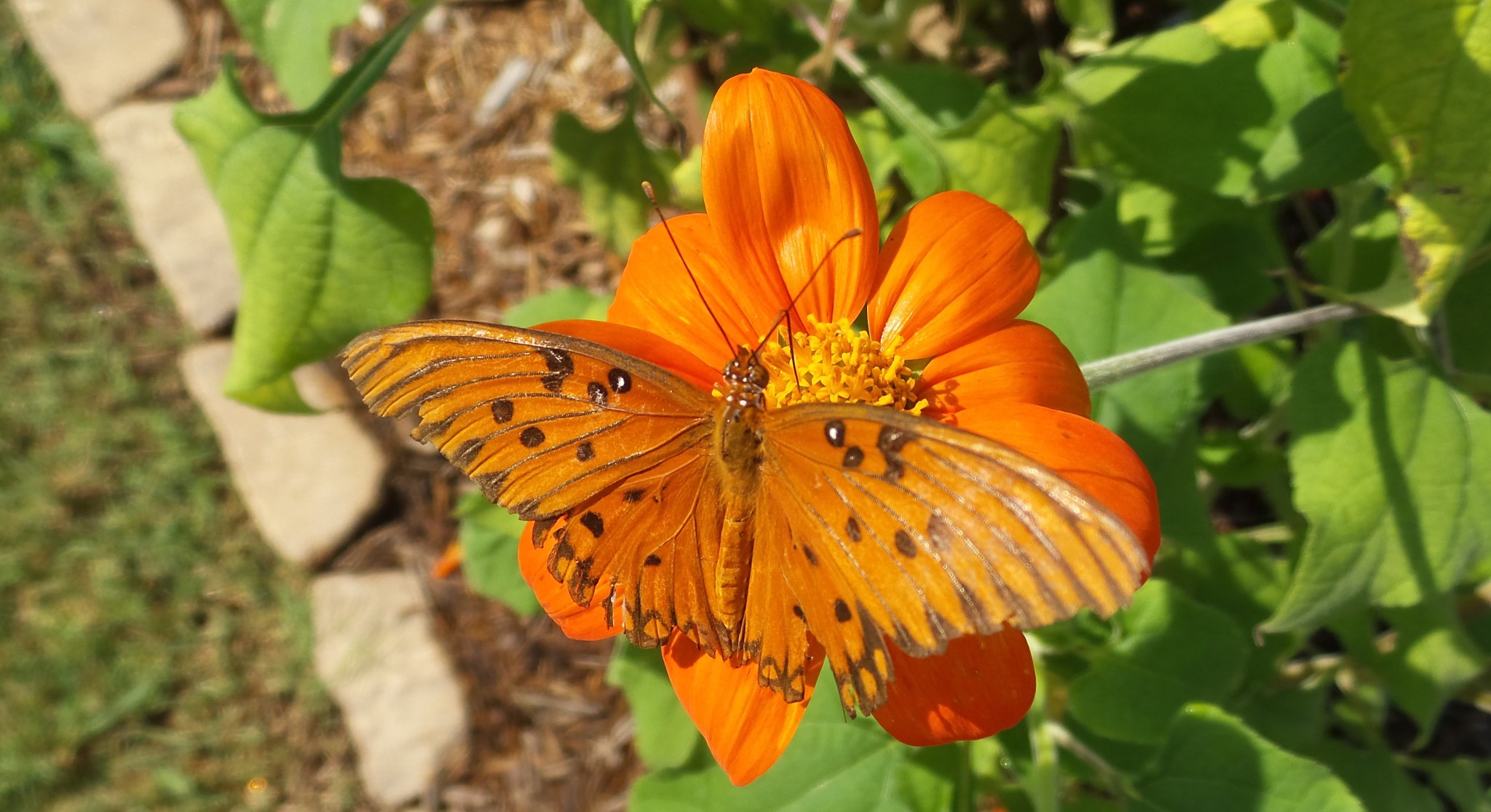
A Gulf fritillary butterfly lands on a Mexican sunflower in the pollinator habitat at NASA’s Marshall Space Flight Center during Pollinator Week, held June 21-27. The habitat is a volunteer-maintained garden of more than 160 plants, carefully cultivated to help local populations of bees, butterflies, and other pollinating insects thrive. Pollinator Week is an annual event celebrated internationally in support of pollinator health. Additional volunteers are needed to help with general maintenance of Marshall’s pollinator habitat. For more info, visit here. (NASA/Lindsey Winslette)
Marshall-Built Element for Artemis I Stacked, Highlighted on ‘This Week @NASA’
Workers at NASA’s Kennedy Space Center recently stacked the launch vehicle stage adapter atop the Space Launch System rocket’s core stage, ahead of the uncrewed Artemis I Moon mission targeted for later this year. The milestone is featured in “This Week @NASA,” a weekly video program broadcast on NASA-TV and posted online.
The cone shaped adapter – built at NASA’s Marshall Space Flight Center – connects the core stage and the interim cryogenic propulsion stage, which provides the Orion spacecraft with the additional thrust needed to travel tens of thousands of miles beyond the Moon. Artemis I is the first integrated test of Orion and SLS ahead of missions to the Moon with astronauts.
View this and previous episodes at “This Week @NASA” or on NASA’s YouTube page.
This Week in NASA History: STS-71 Launches – June 27, 1995
This week in 1995, space shuttle Atlantis, mission STS-71, launched from NASA’s Kennedy Space Center on the first space shuttle-Mir docking. STS-71 also marked the 100th U.S. human space launch conducted from Cape Canaveral, Florida. Here, Atlantis prepares to dock with Russia’s Mir space station. Today, the Payload Operations Integration Center at NASA’s Marshall Space Flight Center serves as “science central” for the International Space Station, working 24/7, 365 days a year in support of the orbiting laboratory’s science experiments. After 20 years of continuous human presence, the space station remains the sole space-based proving ground and stepping stone toward achieving the goals of the Artemis program. The NASA History Program is responsible for generating, disseminating, and preserving NASA’s remarkable history and providing a comprehensive understanding of the institutional, cultural, social, political, economic, technological, and scientific aspects of NASA’s activities in aeronautics and space. For more pictures like this one and to connect to NASA’s history, visit the Marshall History Program’s webpage. (NASA)























